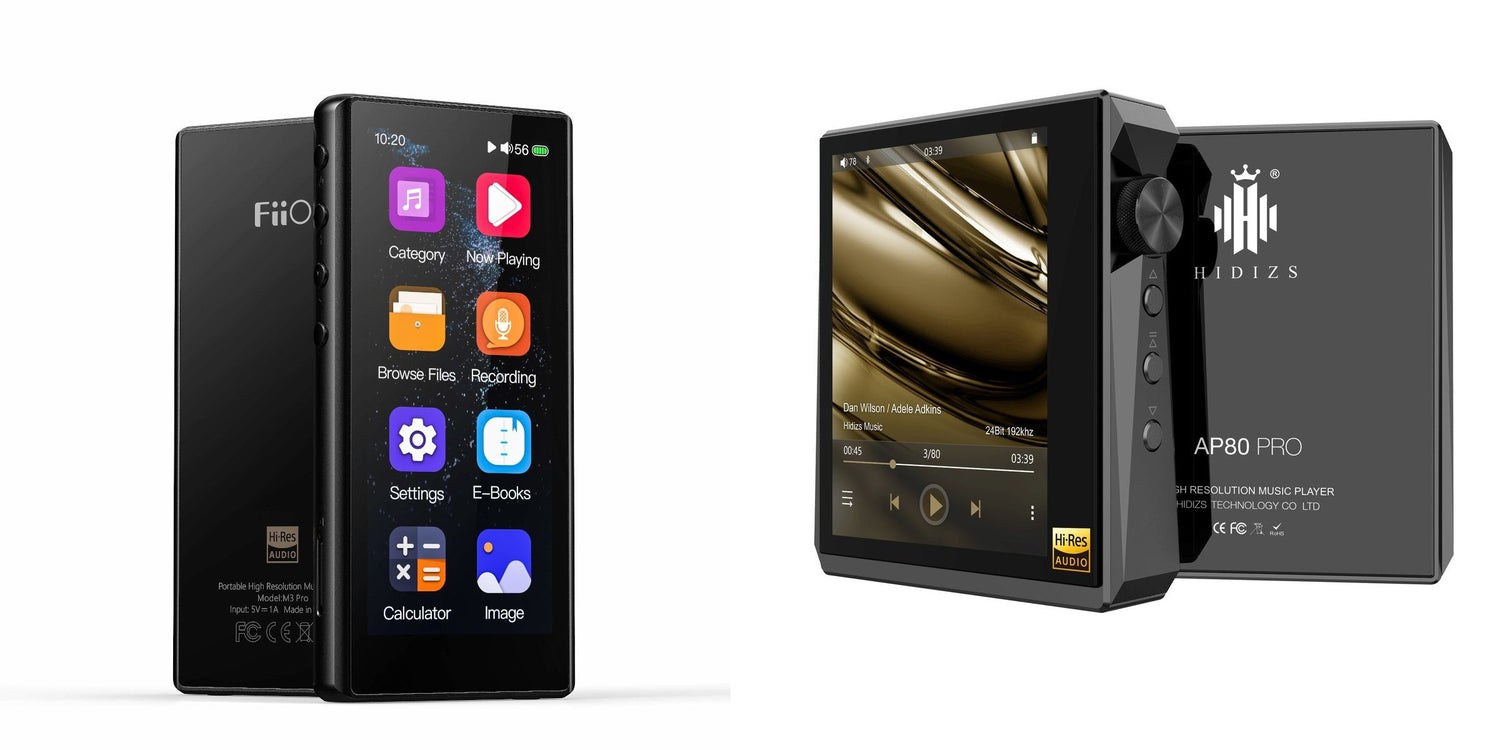You might be wondering, and rightly so, why would anyone want to buy and use a dedicated DAP (Digital Audio Player) in 2020!!
After all, It’s 2020, and everyone has a smartphone. Right?
We’ve previously written an article aiming to answer that question specifically. You can check it out here.
Here is a quick summary:
Top 10 reasons people are using DAPs:
- Many want to have a separate device dedicated just for listening to music.
- Usually, most DAPs deliver much better sound quality and dynamics due to their use of dedicated DAC/Amp chips.
- Much more powerful output power.
- Balanced output.
- Long battery life on most DAPs.
- To prolong the battery life of their smartphone.
- Much better EQ.
- To avoid Android resampling.
- Unfortunately more and more smartphone manufacturers are ditching our beloved 3.5mm jack.
- Some people would rather avoid using a dongle.
While DAPs come in all shapes and sizes, some are so powerful that they blurred the line between Desktop and portable devices. The M15 is one such device.
Today, we are aiming to compare and contrast 2 very popular entry-level DAPs.
But please don’t let the term entry-level fool you, for both these devices are more than capable as we’ll see below.
FiiO M3 Pro vs Hidiz AP80 Pro:
Similarities:
- Both use the same efficient Ingenic X1000E Processor. Ensuring a great battery life.
- Both use the same ES9218P Soc DAC Chip.
- Both devices have HD IPS touch screens.
- Both Utilize Type-C USB2.0.
- Both devices can be used as USB DACs.
- Both are capable of delivering have high power output.
- Both devices deliver great sound quality.
- Both have 1 MicroSD card slot.
- Both support USB audio output.
- Both have great battery life.
- Great choices for aftermarket cases.
Design and build quality:
While aesthetics is certainly something very subjective, we can’t help but say that both devices look stunning in our opinion.
The FiiO M3 Pro has a small, thin, and light metal rectangular body. The front screen is a high resolution 340×800 IPS color display.
Although the chassis is made of Aluminum, It feels very light in the hand, weighing only 70g. This makes it very portable and easy to carry.
The FiiO M3 Pro comes in only one color: Black.
The Hidiz AP80 Pro is also small and Portable. But has a unique square shape. On the front, we have a 2.45 " Samsung IPS HD resolution display along with a Japanese ALPS volume knob on the side. The back is covered in clear stereoscopic glass.
The AP80 Pro comes in 4 different colors: Black, Blue, Red, and Grey.
Operating system:
The M3 Pro uses a customized Linux derived user interface, developed by FiiO. Very smooth and extremely light.
FiiO is known for always providing firmware upgrades.
AP80 Pro uses HiBy OS 3.0. A very mature, stable OS with a lot of diverse customization options.
Supports changing between 8 digital filters.
Has 2 gain settings (Low and High).
Includes 8 EQ effects along with the ability to create your custom EQ Profiles.
Inputs & Buttons:
Both devices are equipped with IPS touchscreens and buttons on the side.
The AP80 Pro offers a unique Japanese ALPS volume wheel for accurately changing the volume.
Format support:
While both devices do come with support for PCM Up to 384kHz-32bit. For DSD, the M3 Pro can only decode up to DSD128. The A80 Pro on the other hand natively supports up to DSD256.
Connectivity:
While both devices are great for use in wired mode. The AP80 Pro takes the lead by offering bidirectional Bluetooth with support for APT-X, LDAC, and HiBy UAT.
Not only that, but It also supports remote operation through the use of HiBy Link.
Power output:
Both devices offer a nearly identical level of performance in single-ended mode. ( around ≥75mW(32Ω / THD+N<1%).
While this is more than enough power to drive most IEMs, the AP80 Pro takes it one step further by offering a balanced 2.5mm output, capable of delivering around 190mW @32Ω.
So in case you want to use your balanced headphones with your DAP or if you find yourself one day owning one of those hard to drive IEMs (The Tin P1 comes to mind). You know the AP80 Pro has got you covered.
Storage expansion:
The M3 Pro supports MicroSD with capacity up to 2TB (theoretically).
The AP80 Pro supports MicroSD with a maximum capacity of 512G.
Extra features:
Both devices offer some small extra features that maybe some users may find useful.
The M3 Pro has voice recording, Clock support, e-Book reading support, and Picture preview.
The AP80 Pro has FM radio and a high-precision step counter function.
Price:
While both are very budget-friendly DAPs, The M3 pro is certainly the more affordable of the two.
Conclusion:
So which one to get?
The answer is, It depends.
It depends a lot on your preference, taste, and use for certain features.
Some options could make the choice easier. If you want Bluetooth, Radio, or a balanced output device. The choice is clear, the AP80 Pro is your go-to.
If you are looking for something that does the job with no bells and whistles, something more budget-friendly that looks good and is portable enough to carry everywhere. The M3 Pro is an excellent choice.
Still unsure? You can know more about each of these devices here and here.




Leave a comment
All comments are moderated before being published.
This site is protected by hCaptcha and the hCaptcha Privacy Policy and Terms of Service apply.